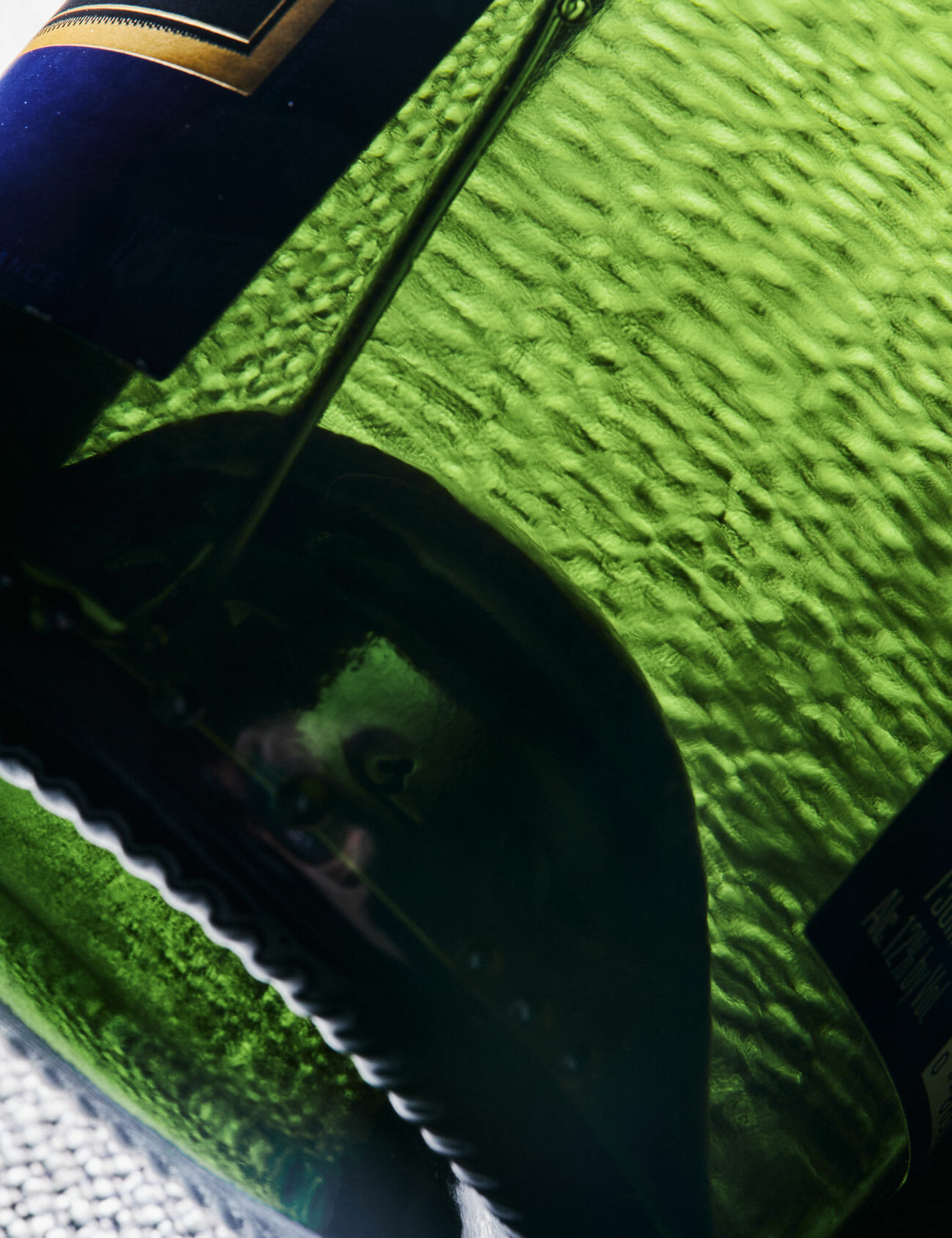Welcome to Further Details, a series dedicated to ubiquitous but overlooked elements hidden on your favorite products. This week: the indentation in the bottom of your wine bottle.
Order wine from a restaurant and you might notice the sommelier pours you a glass in a distinctive manner. Their thumb is slipped into an indent of the bottom of the bottle, their index and middle fingers supporting the body. From this encounter, one could infer that the indent on that wine bottle, called a punt, is meant to assist with pouring wine. That’s not wrong, but it’s also not entirely right.
The origin of the punt goes back to when bottles were made by hand. Glassblowers would use a pontil rod affixed to the bottom of the bottle so the opposite end could be fashioned. Once the bottle was finished, the removal of the pontil rod resulted in a permanent indentation at the bottom of the bottle. The punts were also useful for adding stability to the bottle so it wouldn’t topple over when stood upright.
While the pontil rod is the practical reason for the existence of the punt, people also believe the punt was an intended feature to offset the pressure of holding sparkling wine as it underwent in-bottle fermentation. There are also those who believe the circular ring around the punt helps catch sediments and reduces the likelihood that they end up in your glass. While these theories could hold water, there’s no record that these were the intentions of the punt.
When machinery replaced glassblowers in the production of wine bottles, the punt remained as a nod to tradition. However, its existence suddenly became important in unintentional ways.

Sommeliers were on to something when they began pouring wine in their particular way. Much like a wine glass’ stem reduces hand contact with the wine, the punt allows the pourer to reduce the surface area of their hand touching the bottle’s body. The more contact between your hand and the bottle, the more your body heat warms up the wine.
A common misconception is that deeper bottle punts mean higher quality wine. While some glassblowers continue the tradition of making bottles by hand, there is no relation between punts and wine quality. However, it is possible that some wine manufacturers might exploit the punt as a marketing tactic. A standard bottle of wine is 750 milliliters. If two standard bottles of wine are placed next to each other, one may appear larger because of a more prominent punt. The size discrepancy could play a role in a buyer’s decision when opting for a bottle.
Nowadays, the punt is no longer a byproduct of handblown glass bottles. While tradition has kept the punt alive, wine drinkers have found ways to give the punt significance whether they’re drinking a $5 Yellowtail or a $500 Bordeaux.
